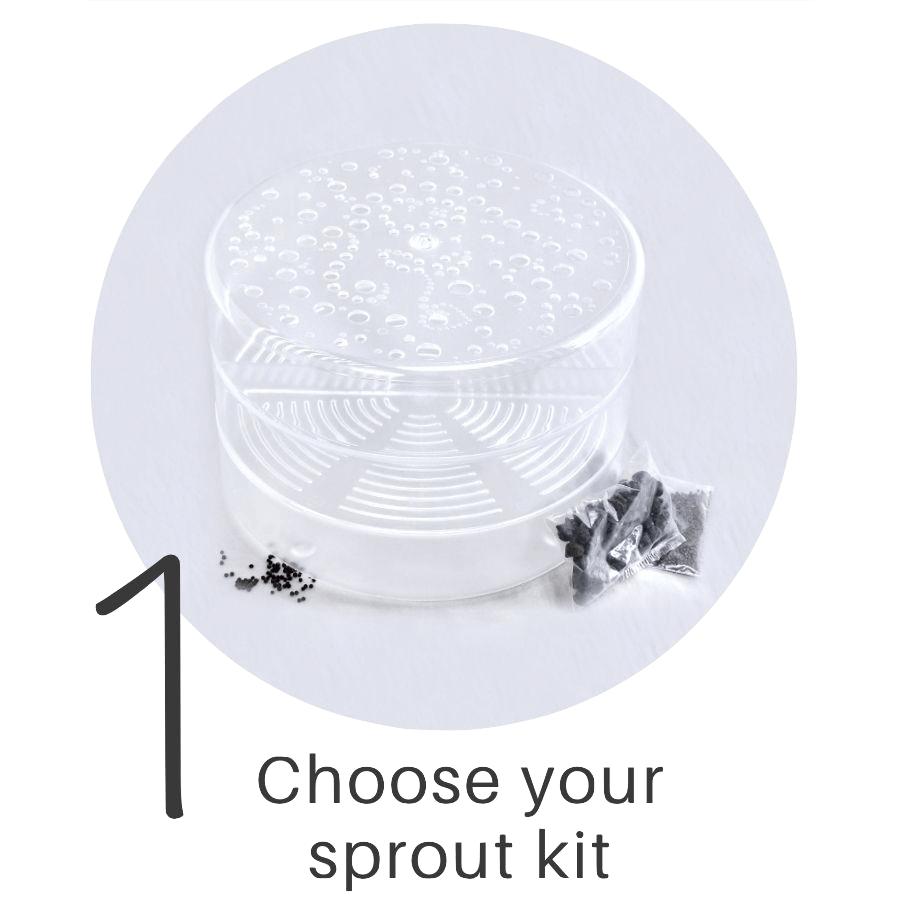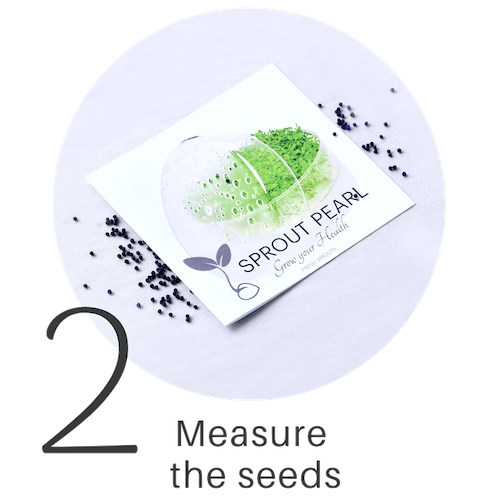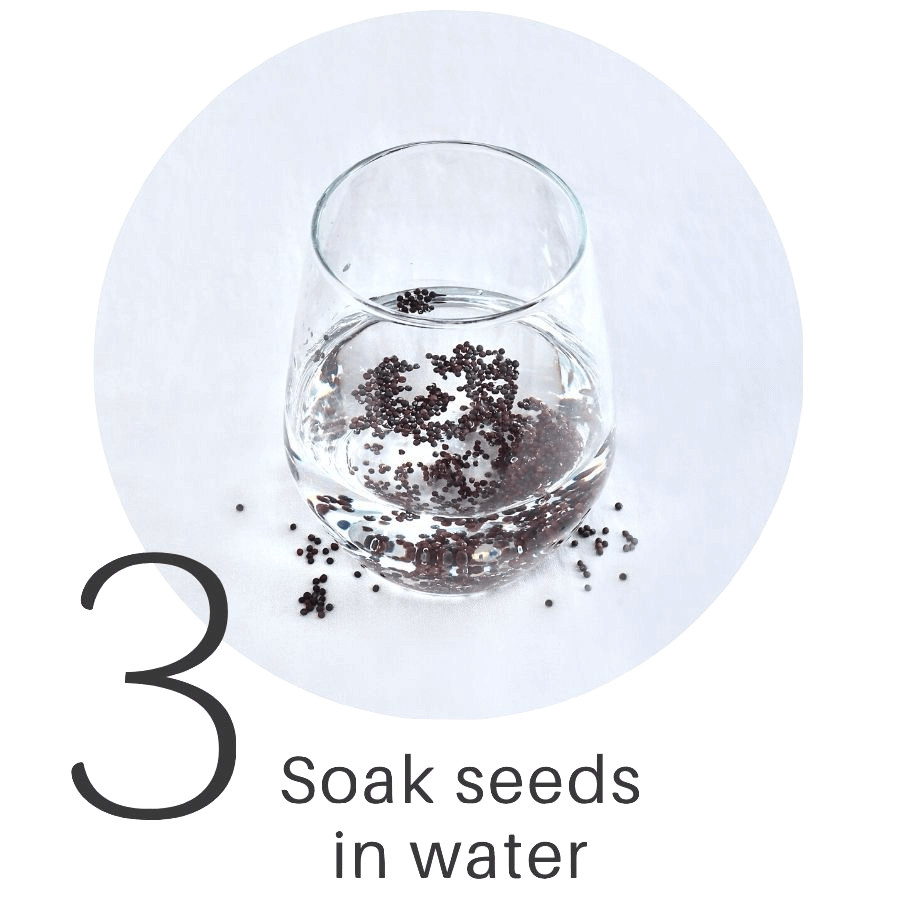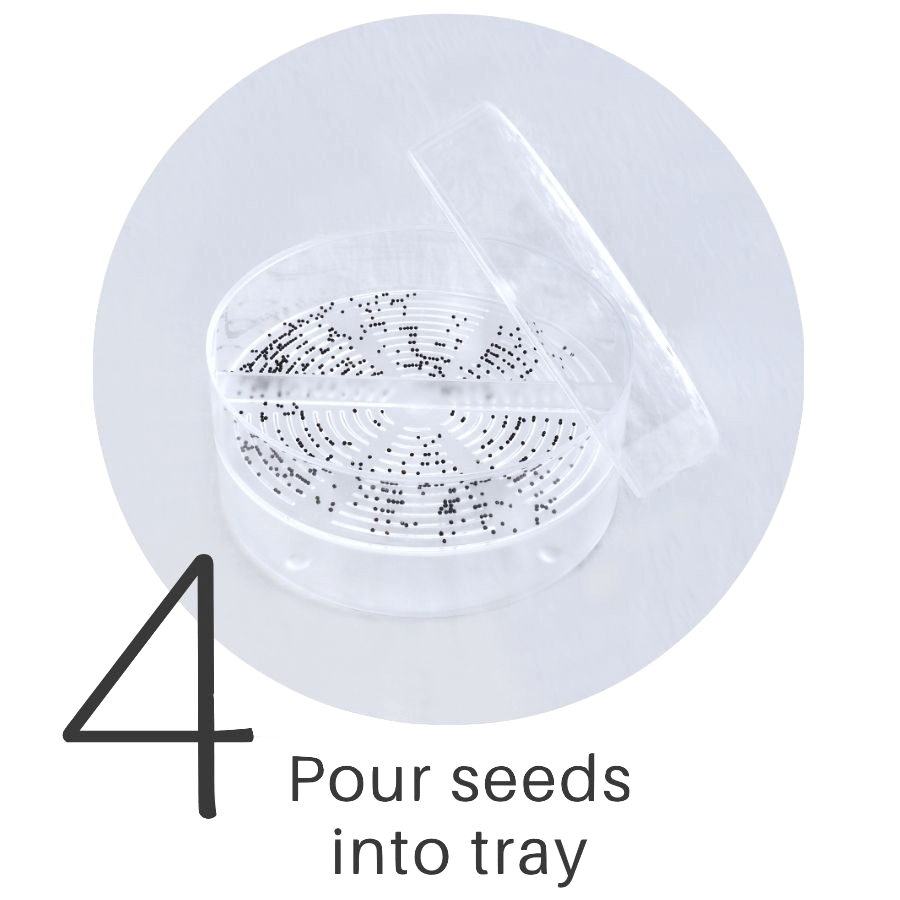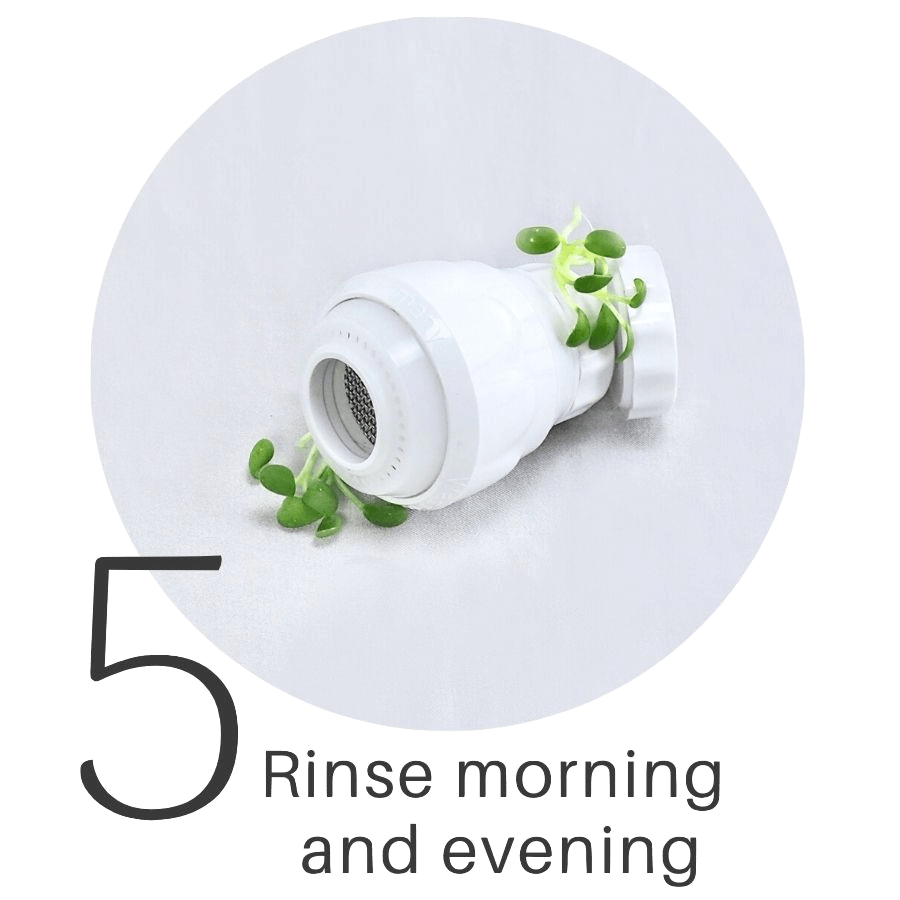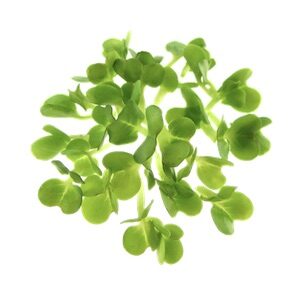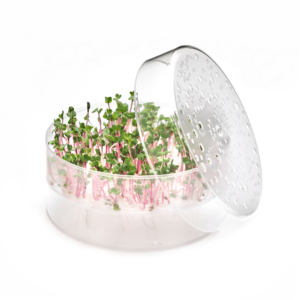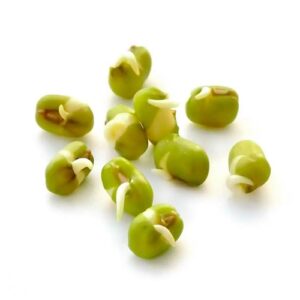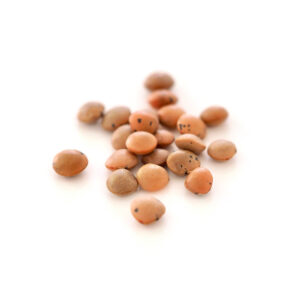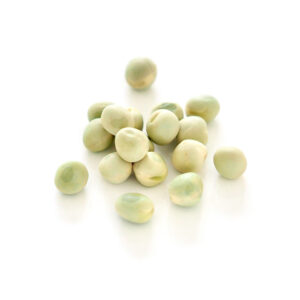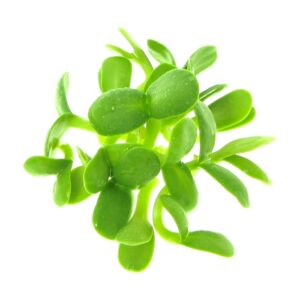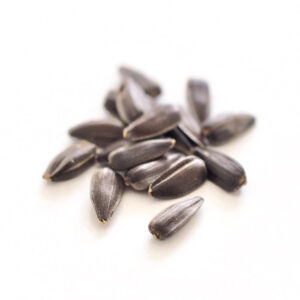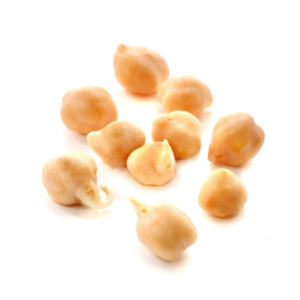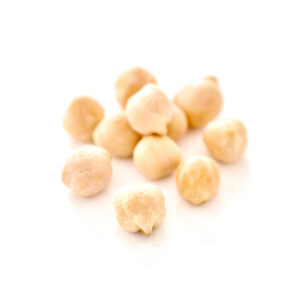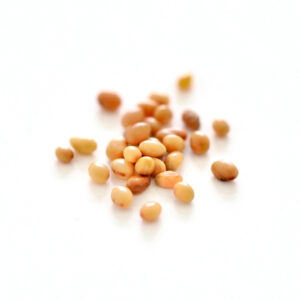14 ideas for Sprouts and Microgreens in food
How do you use Sprouts and Microgreens in food?
Can you eat all sprouts raw? You will find answers to those questions and many more in this article.
Content of the article
What are Sprouts and Microgreens?
Why use Sprouts and Microgreens in food?
How to grow Sprouts in 2-6 days
Can you eat raw Sprouts and Microgreens?
Can you eat whole Sprouts and Microgreens?
How do you get the most nutrition from Sprouts?
How do you use Sprouts and Microgreens in food?

What are Sprouts and Microgreens?
Sprouts are the first stage of the plant after the seed has begun to germinate. You harvest some sprouts after 1-3 days, when they have a short root. Others you harvest after 5-6 days, when they have developed small leaves.
Microgreens are the next stage of the plant after sprouting. You harvest microgreens after 10-12 days, when the plants have had their first set of true leaves.
You can grow both sizes of plants in your kitchen all year round.
How do Sprouts and Microgreens grow?
Sprouts feed on the nutrients inside their seeds. You therefore do not give sprouts fertilizer. There is only nutrition in the seed, for the first 7 days of growth for the plant. This is why you harvest your sprouts before they run out of nutrients in the seed.
Microgreens grow from the same seeds as sprouts. Since Microgreens have to grow up to 12 days before harvest, the plants need you to give them a bit of fertilizer. The easiest way to do this is to spray mild, liquid fertilizer on their roots from day 7 until you harvest them on day 12.

Why use Sprouts and Microgreens in food?
There are several reasons to use Sprouts and Microgreens in your food:
1) Sprouts in particular are very elegant little plants with so much flavor and beauty that they put the finishing touch on your food.
2) Sprouts have more flavor than the larger Microgreens and even more than large vegetables and lettuce. Try it yourself!
3) Sprouts with leaves are small works of art. You simply cannot help but admire them in the food.
4) Growing your own food is fun. You can even serve the food with a story about how you grew Sprouts and Microgreens yourself. Your guests will enjoy hearing how you’ve grown them.
How to grow Sprouts in 2-6 days
Sprouts are easier and faster to grow than Microgreens for your food. How to grow Sprouts in a SpreePear starter kit:
Measure out an amount of seed that fits the seed tray – see the manual in the package.
Soak the measured seeds for 8-12 hours as shown on the seed bag.
Pour the seeds into the SpirePerlen.
Rinse, drain and place the tray on the kitchen counter in light shade.
Then rinse morning + evening with clean water from the kitchen tap.
Harvest your mature sprouts after 2-6 days depending on the variety you have chosen.
Now you can use your fresh sprouts raw or warm in all dishes.

Can you eat raw Sprouts and Microgreens?
Most people can eat sprouts from the seeds in the shop without cooking. However, some find that chickpeas can cause stomach cramps if eaten raw. This is because chickpeas contain trypsin inhibitors. This protein is neutralized during germination. But if you sprout them for a short time or if you make a very large bowl of raw chickpea sprout hummus, you can get a stomach ache.
Trypsin inhibitors prevent the digestion of the proteins in the chickpea. It is the chickpea’s defense against an animal digesting the whole chickpea.
The solution is that you sprout the chickpeas until the root is 1½ – 2 cm long. Then boil the sprouts for 5 minutes when you harvest them. Cool and then you can eat them in your food. The decoction will neutralize both lectins and trypsin inhibitors.
You can eat all the shop’s other Sprouts and Microgreens raw.
Should Sprouts have a certain length?
Sprouts of Lentils, Chickpeas and Mung beans must have at least ½ – 1.5 cm long roots. Then you can eat them raw. This is because legumes contain lectins which are neutralized as they develop their roots.
Leafy sprouts – i.e. Broccoli, Radish, Sunflower, Endive, Clover, Rapeseed, Pink Cabbage etc. – do you grow normally until they unfold their leaves and the leaves have color. In principle, you can eat them already from the time their root is 1 cm long, but you get a much better taste and yield by letting them grow until they have unfolded their leaves.
The last group is Peas, Fenugreek and Corn. You can eat the three either with 1 cm of root or when they have grown leaves.
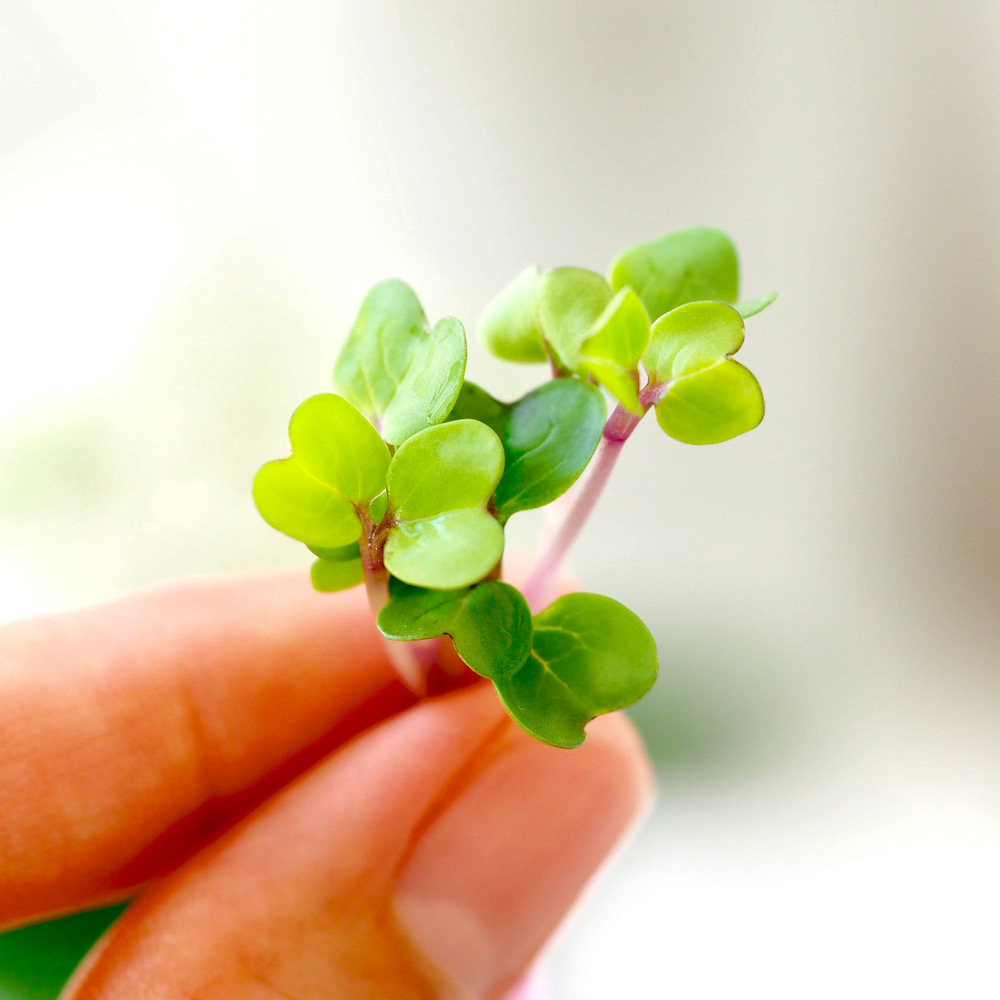
Can you eat whole Sprouts and Microgreens?
Yes, you can eat whole Sprouts. That is, the root, the stem and the leaves.
However, it is important that you only eat the roots if they are white and smell good. Brown, withered roots do not contribute anything good to the food, so you can cut them off.
If the roots of your sprouts are black, you should discard the entire sprout. In that case, you have left the sprouts with the roots in water, so the roots have rotted and the sprouts have become sick.
You can tell healthy sprouts and roots by the fact that both parts smell neutral or a hint of fresh salad.
By the way, you should refrain from eating the hard shells on sunflower, beetroot, fennel and rhubarb. But you may eat the thin seed capsules of Alfalfa, Clover and Radish sprouts.
Can you eat the root of microgreens?
No, you should not eat the root of Mikrogreens. However, remember that with microgreens we are talking about small plants, which are the stage after Sprouts with leaves. See the definition above.
The reason why you cannot eat the roots of microgreens is that the microgreens have had fertilizer on the roots. Here in the shop I only sell vegan/plant-based fertiliser. Still, I wouldn’t think you should eat the roots of microgreens, as fertilizers can easily cause bacterial growth on the roots.
The roots on Mikrogrønt are also no longer the small, fine roots on Sprouts. In contrast, Microgreen roots are long and strong. They don’t really have any flavor either. So there is no point in eating the roots of microgreens.
By the way, remember that you should not cut the roots of your microgreens before you harvest the plants. The roots are vital for growth.
Are you curious?
How to get the most nutrition from Sprouts and Microgreens?
Your sprouts are at their peak nutritionally when they have reached the recommended length you can read on the seed bag. That is, for lentils, chickpeas, peas and beans, it is a 1-3 cm long root. For leaf sprouts, it is when the leaves have turned colour. For Microgreen, it is when the plants have developed 1-2 sets of true leaves.
Like fresh lettuce, Sprouts and Microgreens keep best as long as they have just a little bit of root. It’s incredible to think about, but your microplants will continue to grow in the salad or lunch box as long as the plant is intact.
Like all greens, the nutrition of the small plants begins to oxidize as soon as you chop, mash and blend the plants. If you therefore do not eat your sprouts whole, you get the most nutrition from sprouts by eating them shortly after cooking.
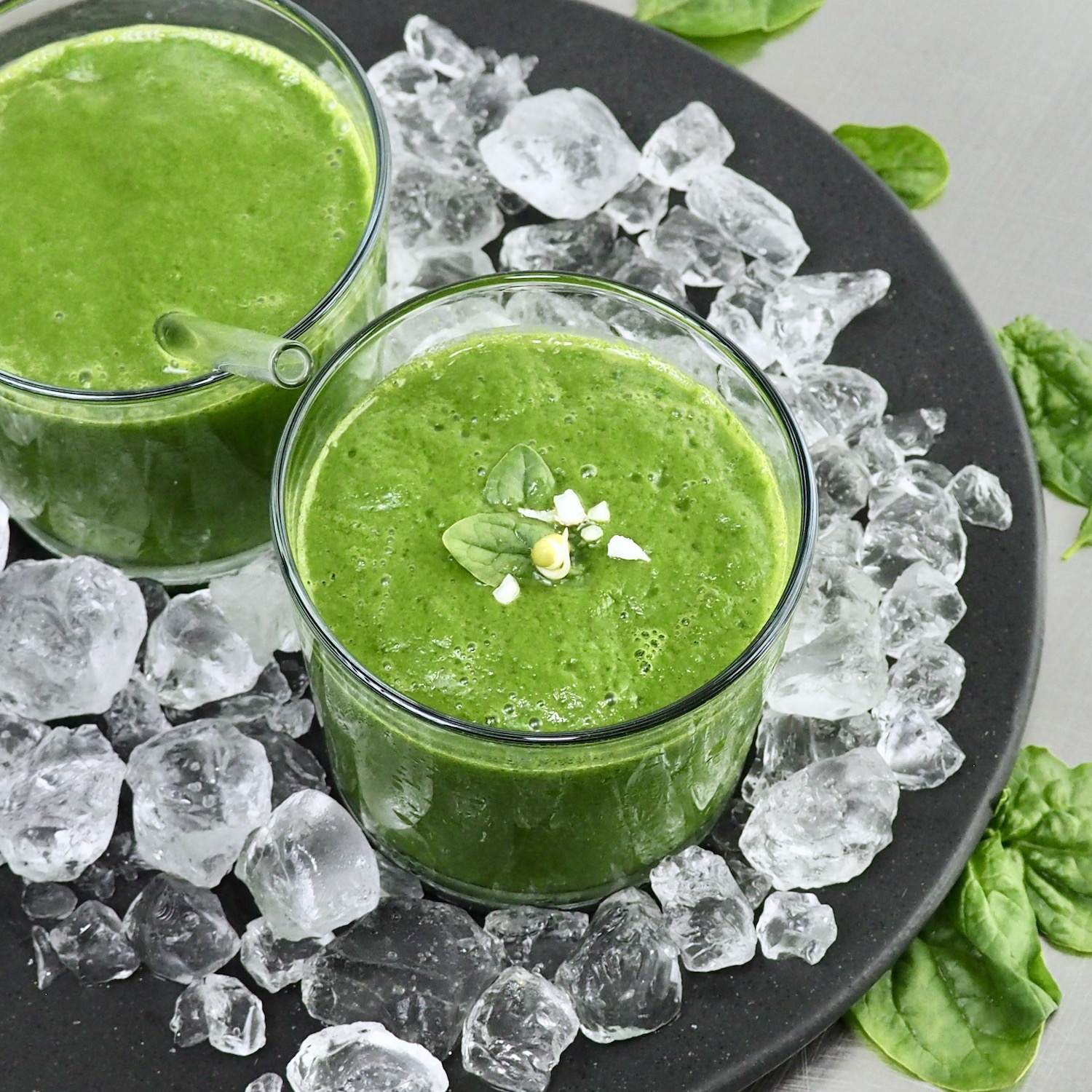
How do you use Sprouts and Microgreens in food?
You use Sprouts and Microgreens in your food just like other greens.
Sprouts in particular, however, have a stronger flavor than the grown vegetables and lettuce of the same variety. So taste your sprouts before using them in food. Maybe you only need 10 Rose Radish sprouts? They taste as strong as a whole radish.
Microgreens are slightly milder in flavor than Sprouts, but they still taste more than larger plants. If you grow Rucola microgreens, you only need to use about half to get the same richness of taste.
Research has shown that it is not just the taste that is more potent in Sprouts and Microgreens. Their nutritional content is also higher per gram of plant. That was just a few more reasons to grow your own micro plants.
Can you slice, chop and blend Sprouts?
When deciding how to cook your sprouts, an easy tip is to compare them to fresh leaf lettuce. Sprouts respond to cutting, chopping, blending and heat just like lettuce leaves.
You can easily chop your sprouts for the salad, chop them for fine green decoration on the sandwich or blend them into delicious smoothies or dip. They just start to turn brown on the cut surfaces after a while – just like cut lettuce.
A trick to maintain a fresh appearance in your harvested sprouts is to drizzle the sliced sprouts with a little lemon. Another is to wait to cut them into pieces before serving. A third is my favourite: serving the food with small bowls of sprouts grown on cotton wool or hemp mats. The guests can then cut the sprouts themselves for the food.
buy seeds + hemp matSprouts and Microgreens in various dishes
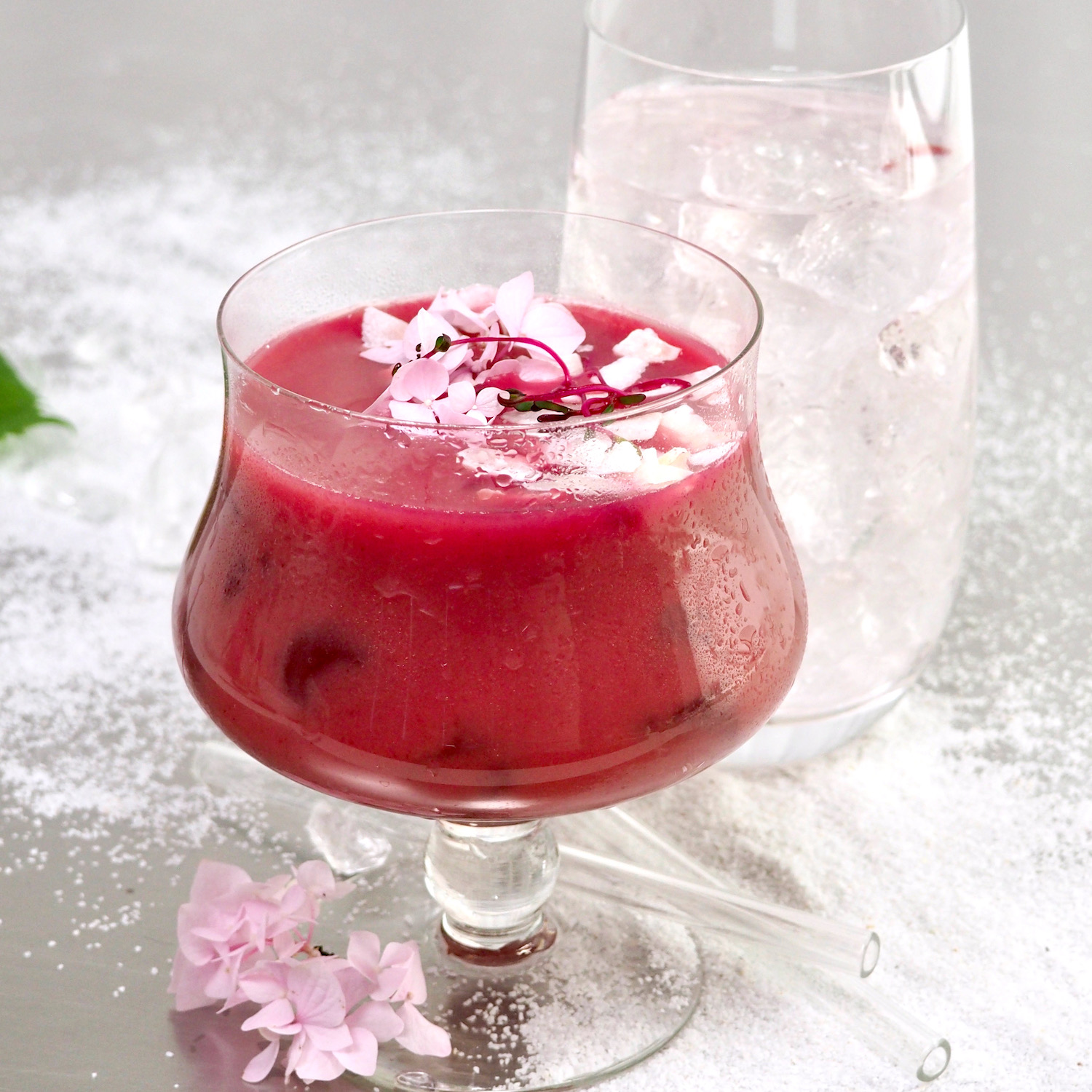
Juice
There is not much juice in Sprouts, but these Microgreens are good in juice: Sunflower – Pea shoots – Clover – Lucerne. Do not use Chickpeas and Mung beans in juice.

Smoothies
Several Sprouts and Microgreens are delicious in smoothies: Broccoli – Red clover – White clover – Lucerne – Pea – Sunflower – Rucola – Mung bean – Endive – Colza – Mizuna.
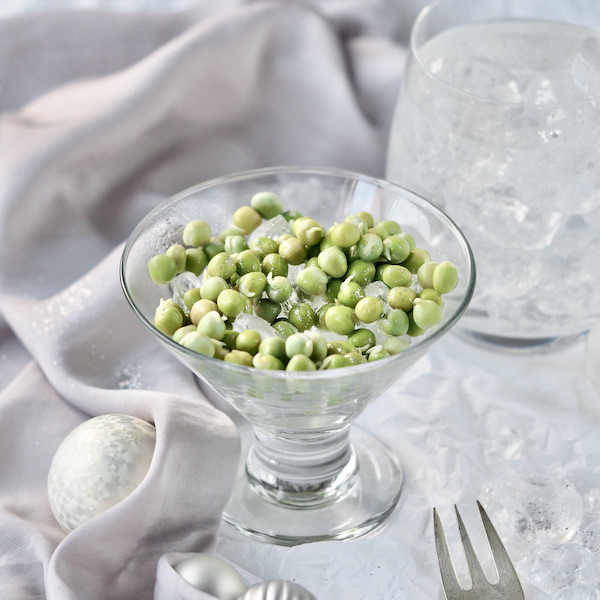
Snacks
If you love green and vitamin-rich snacks, a couple of Sprouts are made for the purpose: Fresh Pea Sprouts and Sunflower Sprouts. Or chickpea sprouts roasted with spices.
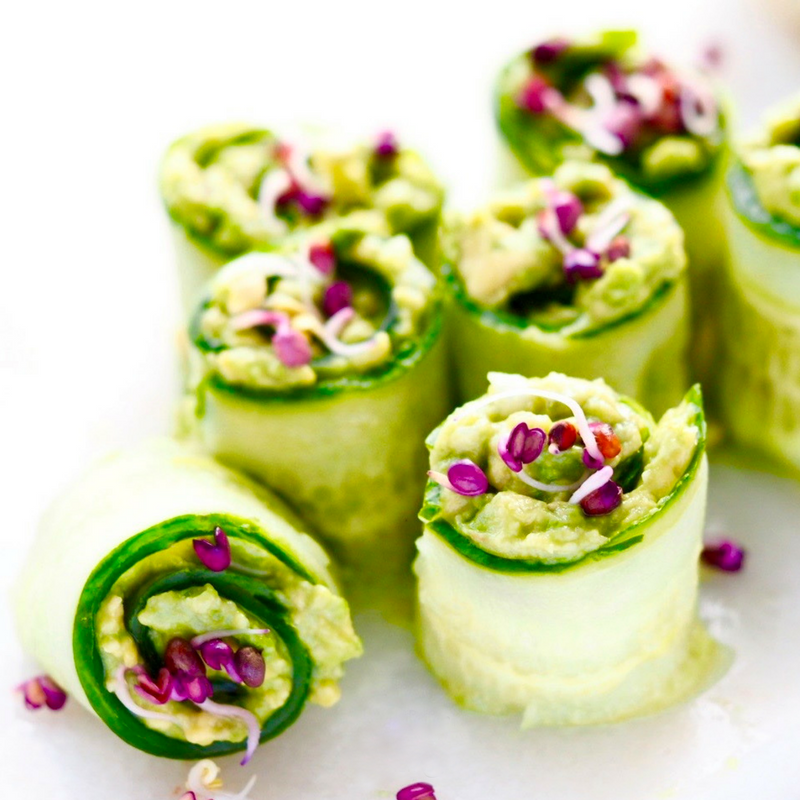
Wraps
All Sprouts and Microgreens do really well in Wraps. Use them instead of salad or as a beautiful decoration. The photo shows Rose Radish and Violet Radish sprouts.
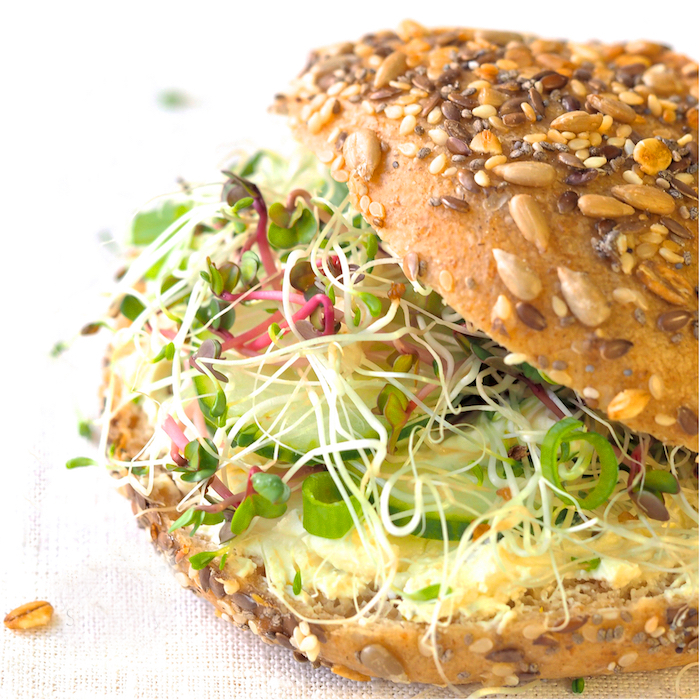
Sandwich
Sandwiches and smørrebrød become more exciting with fresh Sprouts and Microgreens of all varieties. The photo shows Rose radish and Crimson Clover sprouts.

Soup
Warm and cold soup can be beautifully decorated, extra filling and protein with leguminous sprouts. That is: Peas – Lentils – Chickpeas – Mung beans.
Are you ready to grow Sprouts?
Questions from other Readers
Yes, you can use Sprouts and Microgreens in Smoothies, Salads, Sandwiches, Wraps, Woks, Soups and Dips. You just choose a Sprout or Microgreen, which gets the flavor that suits the dish.
Yes, you can eat Sprouts and Microgreens raw if you grow from certified sprouting seeds. Because then you are sure that the seeds: 1) Are of a suitable variety for Sprouts and Microgreens. 2) The seeds are tested for bacteria, as is a legal requirement today. 3) The company that packs the seeds is EU food approved.
Because Sprouts are very elegant little plants with so much flavor and beauty that they put the finishing touch on your food.

